How To Lose Belly Fat: Easiest & Most Effective Exercises
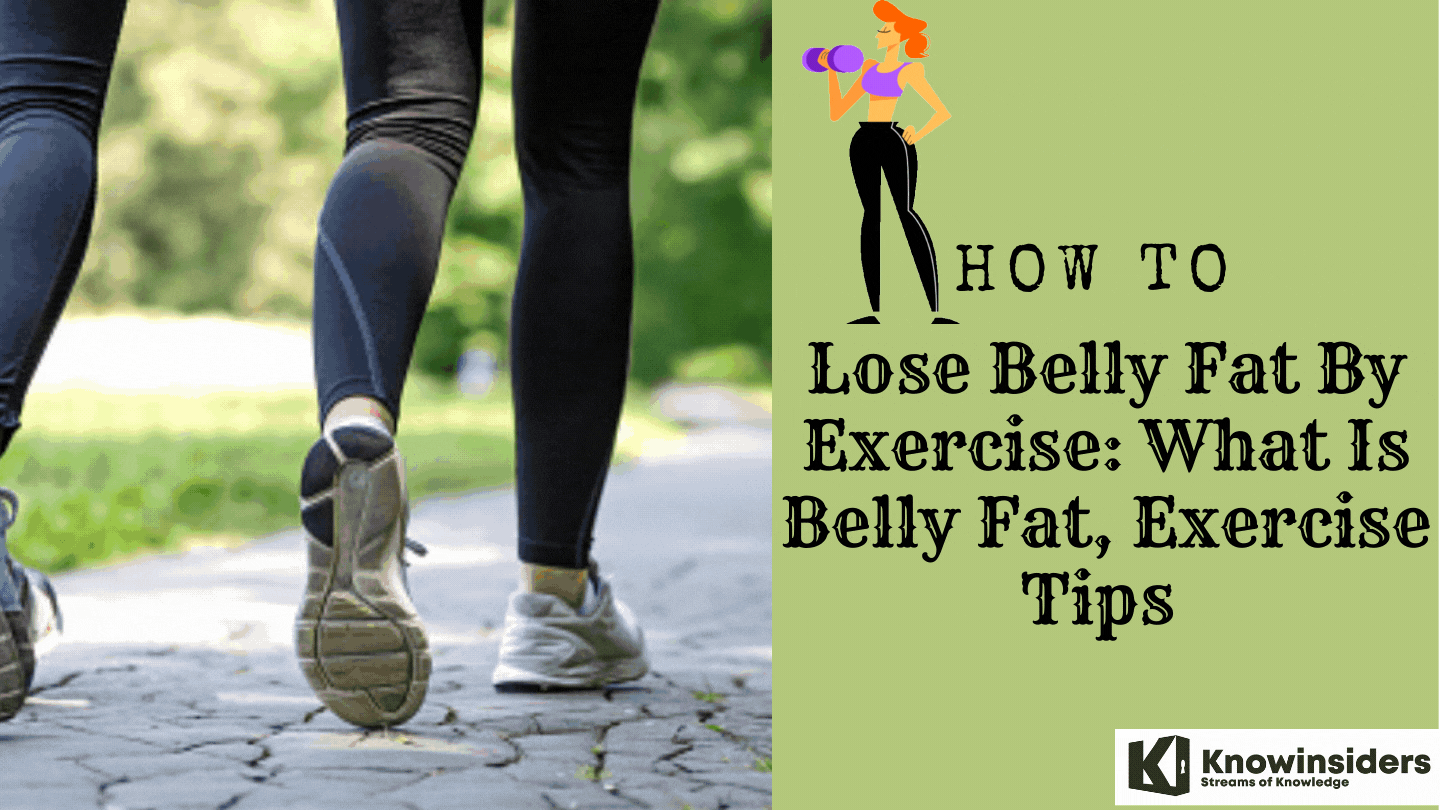 |
| How To Lose Belly Fat By Exercise: What Is Belly Fat, Exercise Tips |
'How to lose belly fat', 'how to get rid of belly fat' and 'the best exercise to lose belly fat' are three of Google's most-searched health terms. Belly fat is more than a nuisance that makes your clothes feel tight. It’s seriously harmful.
One type of belly fat — referred to as visceral fat — is a major risk factor for type 2 diabetes, heart disease, and other conditions. Many health organizations use body mass index (BMI) to classify weight and predict the risk of metabolic disease.
However, it is not impossible to lose belly fat, and this article will guide you through understanding belly fat, why you have it, and how to lose it by doing exercises.
What is Belly Fat?
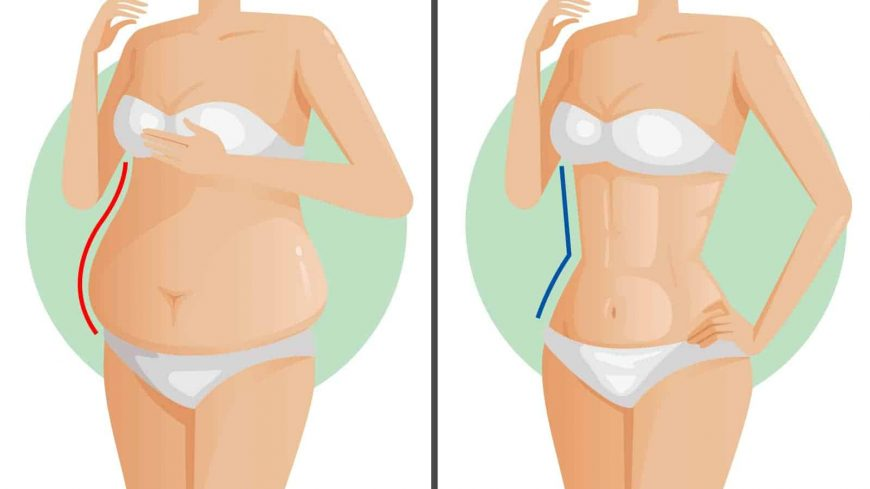 |
| Photo: Proesthe |
Belly fat is excess abdominal fat surrounding the organs in your stomach. There are three types of fat: triglycerides (the fat that circulates in your blood), subcutaneous fat (the layer directly below the skin’s surface), and visceral fat (dangerous belly fat). Visceral fat is located beneath the muscles in your stomach and poses many dangers to your health when there is too much of it.
How much body fat should you have?
The way in which women could and should lose belly fat is different from that of men. Women need some belly fat to function – fat cells store oestrogen, so having too little can cause your whole hormonal function to go out of whack, causing serious health issues such as irregular periods and even infertility.
To that end, striving to lose fat from your stomach with the aim of getting a six-pack, for most females, wouldn't be healthy. Instead, aim to sit within the 21-30% body fat category. This is what's considered a healthy body fat percentage range for women.
What belly fat does to your body?
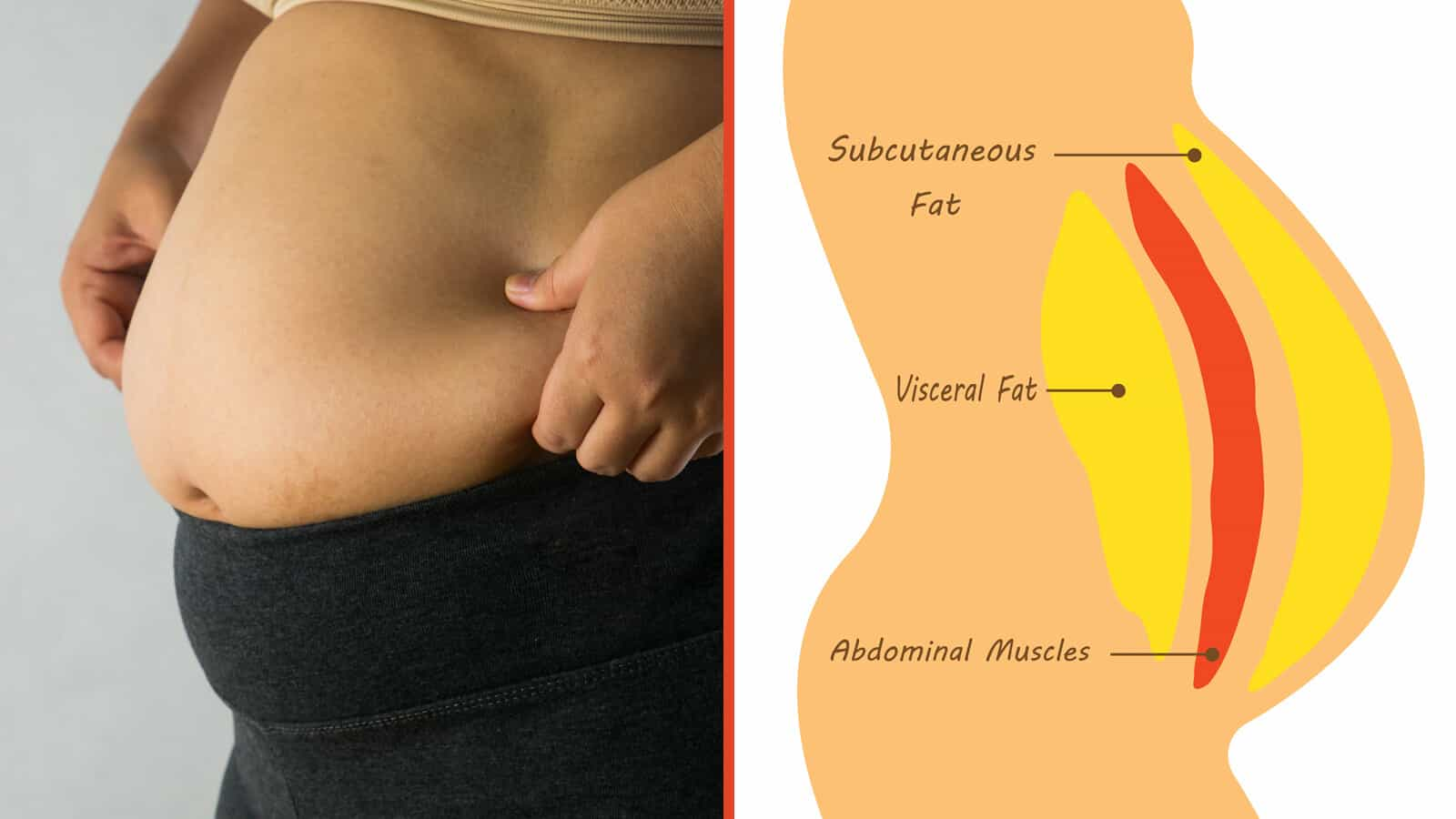 |
| Photo: Power of Positivity |
It was once thought that fat was just a passive substance; folks thought it just hung around as stored energy. But, in fact, fat is more active than first thought. The latest research shows that fat cells, including both subcutaneous and visceral fat cells, are metabolically active, secreting hormones and chemicals that can impact every organ in your body.
When you’re at an ideal weight, the hormones and chemicals secreted by fat cells are actually healthy. They do a number of positive things, such as regulate insulin, help to regulate appetite by allowing you to feel satisfied after eating, and even help burn stored fat.
The problem arises when you have more and larger fat cells than normal, which often occurs in an individual who’s overweight. These larger fat cells produce more hormones and chemicals than your body needs, which can impact your health over time and place you at risk for diseases like diabetes, stroke, heart attack, and even certain cancers.
For example, here’s how this fat can affect your liver: After blood circulates through the visceral fat, it’s directly transported to the liver. The dangerous substances produced by the visceral fat are constantly being rapidly transported to your liver throughout the day (unlike subcutaneous fat stores in your legs and arms, which wait to be called on for energy before releasing fat stores and their byproducts).
This increased fat processing in the liver can lead to the development of fatty liver disease and elevated LDL cholesterol levels (the “lousy,” or damaging cholesterol).
How long does it take to lose belly fat?
Scientifically, you can start to see results and lose belly fat for yourself in something as little as 2 weeks' time. That being said, even if the timeline might be short, cutting around inches off your waistline could require a lot of hard work and following the right balance of diet and workout.
How many calories do you need to eat in a day?
 |
| Photo: Trifecta Nutrition |
When it comes to the numbers, the calorie requirements tend to differ for men and women, depending on their age as well. On average, to target belly fat, ensure that you eat somewhere around 1200 calories a day, and manage to create a 500-calorie deficit which will help you burn fat the right way.
Experts also say that fat loss and inch loss also greatly depend on a person's capability- increased activity and more calorie reduction will definitely help you see results a little bit faster.
 What Are The Best Foods That Burn Belly Fat? What Are The Best Foods That Burn Belly Fat? Check out the detailed guide on what foods are the best for burning belly fat, and what kinds of diets are perfect for your health. |
Best Exercises to Burn Belly Fat: Easiest and Most Effective Exercises
1. Running
 |
| Photo: Verywell Fit |
Running is an effective way to burn calories in a relatively short period of time. The number of calories you burn while running will vary based on your body size, your pace, and the running duration. But as a very general guideline, many runners of average size estimate that they burn about 100 calories per mile.
Individuals who successfully lose weight and keep it off burn about 2,800 calories a week through planned exercise, according to statistics from the National Weight Control Registry. Assuming an average of 100 calories per mile, that's about 28 miles per week.
It's important to note that this is more than the average runner completes in a week and is especially a lot for a new runner out of the gates. You should ease into your mileage and work up to a number that works for you, as overtraining poses an injury risk.
If running is your only form of exercise for weight loss, it is possible to reach that goal. Don't worry about your pace or the intensity of your run, just focus on getting the miles with a consistent weekly schedule.
Plan your runs in advance and schedule them like you'd schedule any other important event. Eventually, you will burn the calories you need to lose weight with running.
To burn more calories when running, you would need to run at a higher intensity pace, roughly 80 percent or 90 percent of your maximum heart rate. At this speed, you're not doing an all-out sprint, but you're working hard enough so that you're not able to carry on a conversation.
Start by doing a 20-minute run at around 80 percent to 90 percent intensity. Alternately, you can do interval training where you alternate between high- and low-intensity workouts. As you progress and become more fit, you can extend the time of the intervals as well as the repetitions.
Of course, you shouldn't run at this pace all of the time. After strenuous activity of any sort, you need to give your body a chance to recover and rebuild itself. It is reasonable to complete one or two high-intensity runs per week.
On the other days of the week, complete longer runs that are less intense. These runs will feel more sustainable so that you can put in more miles and burn more calories. Lastly, to bust boredom and build strength, consider doing hill repeats or indoor treadmill runs.
2. Burpees
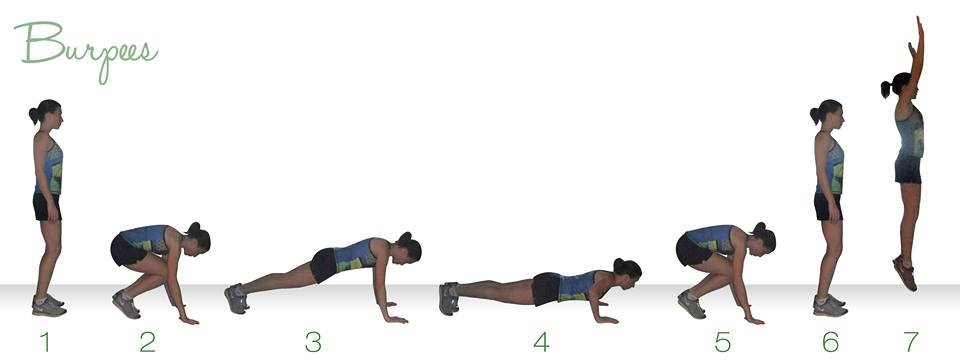 |
| Photo: Thoughts and Pavement |
Burpees are excellent fat-burning exercises that help build strong muscles and increase your metabolism throughout the entire day. They will help you burn calories and your belly fat long after your workout is done. You will start feeling stronger, tighter with more toned belly muscles after performing burpees daily for a month.
One study has shown this type of exercise may help burn belly fat more efficiently than any other traditional long aerobic exercise session. Another study from the American College of Sports Medicine states that 10 fast-paced repetitions of burpees are just as effective as a 30-second all-out sprint.
Burpees or squat thrusts are full-body exercises. They are a combined form of different moves that take care of your arms, legs, core muscles, and cardio. The most basic burpee movement is performed as follows:
- Begin in a standing position with feet placed apart.
- Bend your knees to a squatting position and place your hands flat on the ground in front of you.
- Jump with your legs straight out behind you and leave them there so that it looks like you are in a push-up position.
- Jump so that you are in a squatting position again.
- Return to a standing position.
Burpees are total-body exercises used in strength training and aerobic exercises. Unless you are strong and in good condition, do not try it in a faster version. Basic burpees are beneficial if you have no access or time for the gym or when you are away from home. This 10-minute exercise with a minimum of 20 reps is right for daily routine.
Burpee exercise will kick up the intensity if you add simple challenges to the basic burpee movement. Burpees can be intensified by additional push-ups, jumping, rotation, and weight lifting or by changing your body position to increase coordination, strength, and agility. Some of the variations are as follows:
- Push-up Burpees
- Star jump burpees
- Superman burpees
- Side burpees
- Mountain climber tuck jump burpees
- Dive bomber burpees
- Box burpees
3. Mountain climbers
 |
| Photo: iStock |
Mountain climber abs exercise and its variations are among those few ab workouts that provide a complete abdominal and cardio training. While sit-ups, crunches, planks and others strengthen, and tone muscles, the MT climber exercise burns fat, as well. If you want to have an attractive flat stomach, you should get rid of the fat that covers your tummy.
It has been proved that this exercise strengthens the entire core and boosts the metabolism that burns fat. If you want to have strong, flat abs in a short time, you should include this bodyweight core exercise in your routine. There are some variations as well for even faster and better results.
This is the basic motion of all the variations. You begin with a push up position, then you need to bring your knees toward your chest. You should keep the straight posture of your lower back during the motion, and bring as forward your knees as possible. Focus on your abs muscles. You should feel how they are working.
Diagonal Climber: This is very similar to the regular one, but you bring your knees towards your opposite elbows. The more forward you bring your knees the, more effective this abdominal exercise is. It is great for strengthening and burning fat on hips and obliques.
Spider Climber: Some position, but now you bring your feet next to your hands. To get the best results get your feet as forward as possible and stretch your leg while it is at the back position.
Side to Side Climber: This is may be the hardest. Instead of getting your knees forward, you bring them to side of you body.
Cross Body Version: It starts with the regular climber exercise, but you bring your knees to opposite elbow.
4. Biking
 |
| Photo: Bicycling magazine |
Do interval training once or twice a week—no need for more (see below), and stick to one day if you race or go hard on weekends. Numerous studies have found that high-intensity training significantly reduces total abdominal fat, including dangerous visceral (belly) fat more effectively than lower-intensity exercise.
There are endless ways to do interval training. One simple example: First, warm up for 10 to 15 minutes. Then, pick up your effort so you’re working hard (a 9 on a scale of 1 to 10—you should be breathing hard, but not gasping) for 30 to 60 seconds. Go easy for one minute. Repeat for a total of 5 times, and the cool down for two to three minutes.
Research shows your body also unleashes human growth hormone, which helps you burn fat and maintain muscle, after just 10 to 30 seconds of high-intensity exercise. High-intensity exercise also appears to help curb your appetite and trigger hormones that regulate feelings of hunger and fullness better than lower-intensity exercise, so you’re less likely to overeat.
Use the 80/20 Rule
A number of coaches prescribe what is known as the “80/20 rule,” also called polarized training, for balancing training intensity. It’s definitely worth a try for burning off belly fat as well as for getting fitter and faster.
The goal is to spend 80 percent of riding time at low intensity and 20 percent at moderate to hard intensity. That way, when it’s time to go hard, you have the freshness and energy reserves to go hard enough to maximize those interval efforts.
Hitting both intensities actually improves your abilities all around: Your slow-twitch muscle fibers do the work of recycling the lactate your high-intensity, fast-twitch fibers produce. So when you spend time building them, the payoff is being able to work harder at high intensity—which in turn stimulates more fat burning.
Research shows this intensity combo also makes you faster. In a 2013 study published in the Journal of Applied Physiology, researchers found that when cyclists performed six weeks of 80/20-style training, they more than doubled their power and performance gains, such as lactate threshold, compared to when they spent more time in moderate training zones.
5. Turkish Get-Up
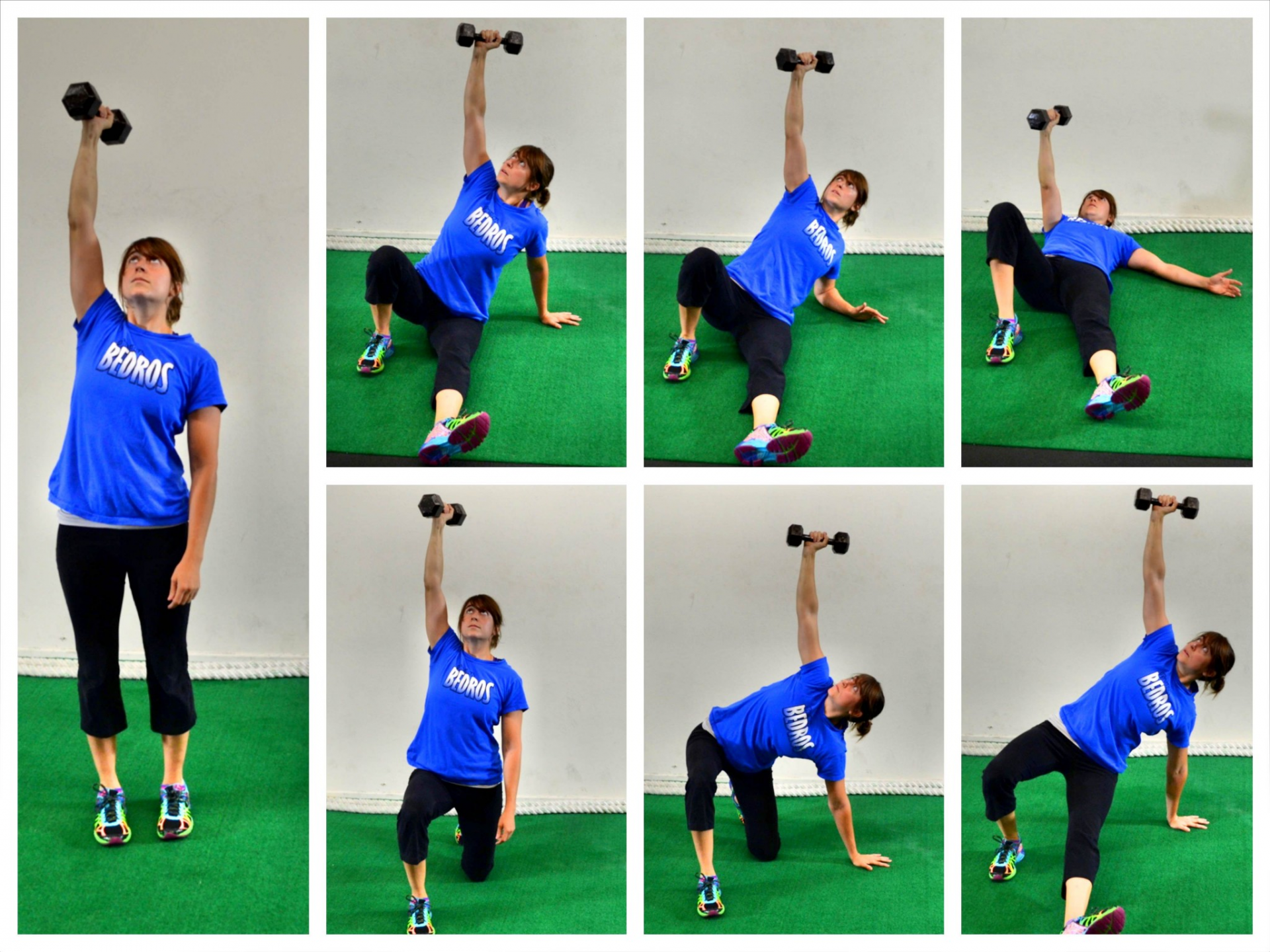 |
| Photo: Redefining Strength |
The Turkish-getup is a 200-year-old total-body exercise that involves using a kettlebell, and it's a favorite of celebrity trainer Ramona Braganza. While it is slightly complicated, she says that the total-body conditioning move is seriously effective for blasting belly fat.
How to do a Turkish get-up: Holding one kettlebell by the handle with both hands, lie on your side in a fetal position. Roll onto your back and press the kettlebell up toward the ceiling with both hands until the weight is stable on one loaded side. Release your free arm and free leg to a 45-degree angle with your palm facing down. Slide the heel of the loaded side closer to your butt to firmly grip the floor.
Pushing through the foot on the floor, punch the kettlebell up with the loaded arm and roll onto your free forearm. Don't shrug your shoulder toward your ear with the supporting side. Be sure to keep your chest wide open. Straighten the elbow on the ground and lift yourself up to a seated position. Weave your front leg through to the back. To protect your knees, your shin on the back leg should be perpendicular to your shin on the front leg.
Perfectly align your arms: wrist over elbow, shoulder over elbow over wrist. Raise your torso to make your upper body erect. Swivel your back knee so that your back shin is parallel with your front shin. Get a grip on the floor with your back toes, then take a deep breath, and stand up.
6. HIIT
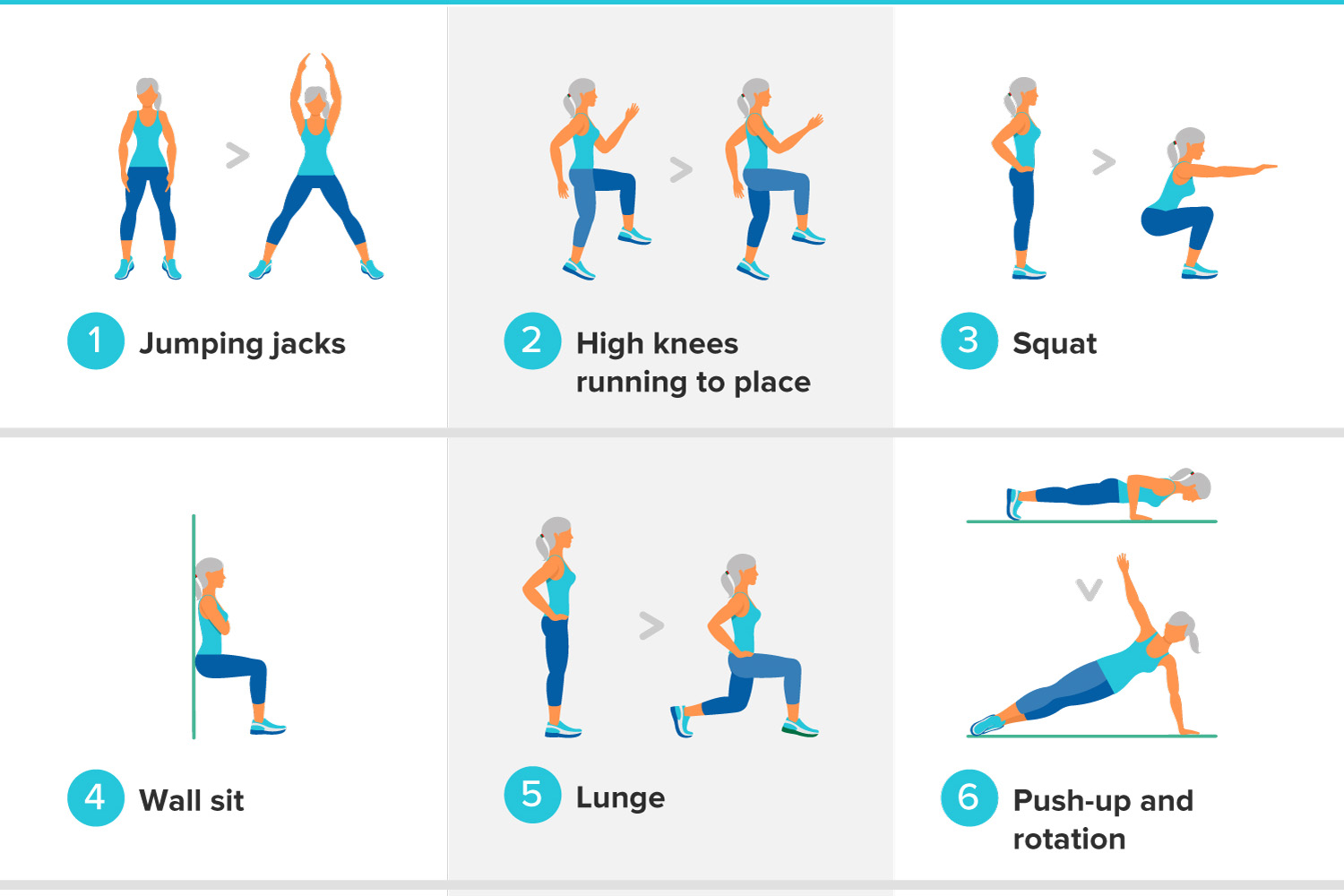 |
| Photo: Rejuvage |
While “hard work, short rests” is the essence of HIIT, there are five main variables that can change the nature of your HIIT workout massively. The first two are your work and rest durations. Working for 40 seconds and resting for 20 is significantly different to resting for 40 and working for 20, with longer work periods generally being better for improving endurance and shorter ones better for power.
Then there’s the intensity of the work periods. With HIIT you need to be pushing hard to get the most benefit from it, and it’s also important to try and maintain a consistent level of effort across the work periods. That means it’s not just about going all-out, because you won’t be able to sustain it across the workout.
The Benefits Of HIIT Workouts
Let’s start with the calories you’ll burn, which are many, not only during the workout but also in the hours afterwards. The latter comes from the excess post-exercise oxygen consumption (EPOC) effect, where your body burns more calories as it returns to its normal resting state after a workout and adapts to the exercise you’ve done. The EPOC effect increases with the intensity of the exercise you do, which is why HIIT is such an effective fat burner.
HIIT also increase your VO2 max, which is the amount of oxygen your body can use and is an indicator of cardio fitness. This is why any running or cycling training plan worth its salt has some form of interval training in it. Increasing your VO2 max is key to working harder for longer, helping you log a 5K personal best, for example.
There are also logistical benefits to HIIT, like the fact your workout takes less time so you can fit it into a lunch break. And while it’s tremendously hard work, the short, sharp challenge of HIIT ensures you’ll never get bored with your training.
7. Walking
 |
| Photo: Openfit |
Losing weight (including belly fat) is all about burning more calories than you’re consuming. Once you have a healthy, well-balanced diet in place and are upping your step count consistently, you’ll begin to notice overall weight loss. For some people, belly fat might be the last area of the body where you’ll notice results, while for others it’ll be the first.
That said, some methods of losing fat and trimming your waistline are more effective than others. Below are three ways you can focus your workouts to burn as much fat as possible, so you can get fit and achieve your weight-loss goals.
To burn as many calories as possible and maximize your weight loss, you’ll need to walk in the correct heart rate zone. The fat-burning zone is roughly 60–70% of your maximum heart rate and burns about 7–12 calories per minute depending on the person. You can calculate your maximum heart rate by subtracting your age from 220. Then, multiply that number by 0.6. For example, a 30-year-old will have a maximum heart rate of 190 beats per minute (bpm). To achieve an intensity that’s equivalent to 60%, aim to hover around 114 bpm.
When you exercise in this fat-burning zone, keep in mind duration is key. Since the intensity is low to moderate, you’ll want to make sure your workouts are long enough (work your way up to 45 minutes to an hour) so the body burns fat instead of stored carbohydrates. In the beginning of your workouts, sugars and stored carbs are burned first. When these are depleted, the body becomes more efficient at burning fat as the workout duration increases.
Try fasted Cardio
Completing your walking workouts in a fasted state in the morning before you eat or drink anything can also help teach your body to use your fat as an energy source for your workouts instead of relying on those carbohydrates you’ve just consumed for breakfast.
Again, aim to walk in the fat-burning zone for at least 45 minutes to an hour. Once you can do this comfortably, increase the duration as long as you can tolerate it for maximum fat burn. As you get more fit you’ll start to see the waistline results you’re seeking.
Try this sample workout: Begin with an easy 10-minute walk to warm up your muscles and get loose. For the main set, walk for either 45 minutes in zone 2 or do two sets of 22 minutes, taking a break, if needed, at the halfway point. You can also do a few exercises like squats, lunges, or pushups to break things up before you begin the second half of your workout. Once you’ve completed 45 minutes, end your walk with another 10 minutes of easy walking to cool down.
Other tips to lose belly fat1. Reduce your stress levelsStress can make you gain belly fat by triggering the adrenal glands to produce cortisol, which is also known as the stress hormone. Research shows that high cortisol levels increase appetite and drive abdominal fat storage. What’s more, women who already have a large waist tend to produce more cortisol in response to stress. Increased cortisol further adds to fat gain around the middle. To help reduce belly fat, engage in pleasurable activities that relieve stress. Practicing yoga or meditation can be effective methods. 2. Avoid sugar-sweetened beveragesSugar-sweetened beverages are loaded with liquid fructose, which can make you gain belly fat. Studies show that sugary drinks lead to increased fat in the liver. One 10-week study found significant abdominal fat gain in people who consumed high fructose beverages. Sugary beverages appear to be even worse than high sugar foods. Since your brain doesn’t process liquid calories the same way it does solid ones, you’re likely to end up consuming too many calories later on and storing them as fat. To lose belly fat, it’s best to completely avoid sugar-sweetened beverages such as: soda punch sweet tea alcoholic mixers containing sugar 3. Get plenty of restful sleepSleep is important for many aspects of your health, including weight. Studies show that people who don’t get enough sleep tend to gain more weight, which may include belly fat. A 16-year study involving more than 68,000 women found that those who slept less than 5 hours per night were significantly more likely to gain weight than those who slept 7 hours or more per night. The condition known as sleep apnea, where breathing stops intermittently during the night, has also been linked to excess visceral fat. In addition to sleeping at least 7 hours per night, make sure you’re getting sufficient quality sleep. If you suspect you may have sleep apnea or another sleep disorder, speak to a doctor and get treated. 4. Track your food intake and exerciseMany things can help you lose weight and belly fat, but consuming fewer calories than your body needs for weight maintenance is key. Keeping a food diary or using an online food tracker or app can help you monitor your calorie intake. This strategy has been shown to be beneficial for weight loss. In addition, food-tracking tools help you to see your intake of protein, carbs, fiber, and micronutrients. Many also allow you to record your exercise and physical activity. 5. Eat fatty fish every weekFatty fish are incredibly healthy. They’re rich in high quality protein and omega-3 fats that protect you from disease. Some evidence suggests that these omega-3 fats may also help reduce visceral fat. Studies in adults and children with fatty liver disease show that fish oil supplements can significantly reduce liver and abdominal fat. Aim to get 2–3 servings of fatty fish per week. Good choices include: salmon herring sardines mackerel anchovies |
 Different Ways To Say Merry Christmas In Chinese? Different Ways To Say Merry Christmas In Chinese? It's time to learn how to say Merry Christmas to give your friends best wishes. How about saying Merry Christmas in Chinese? Let's check it ... |
 How To Win At Poker: Tips For Beginners and Advancers How To Win At Poker: Tips For Beginners and Advancers No matter you are a poker beginner or advancer, follow those tips to have a grate change of success at poker. |
 How To Play Poker: History, Types, Best Tips For Beginners How To Play Poker: History, Types, Best Tips For Beginners Are you a good poker player? If you are a beginner, don't miss this article to know the best tips to win the games. |
 How To Get A Small Business Loan in New York How To Get A Small Business Loan in New York If you are wanting to open a business in the New York, this guide will help you solve your problems with small business loans and ... |


























